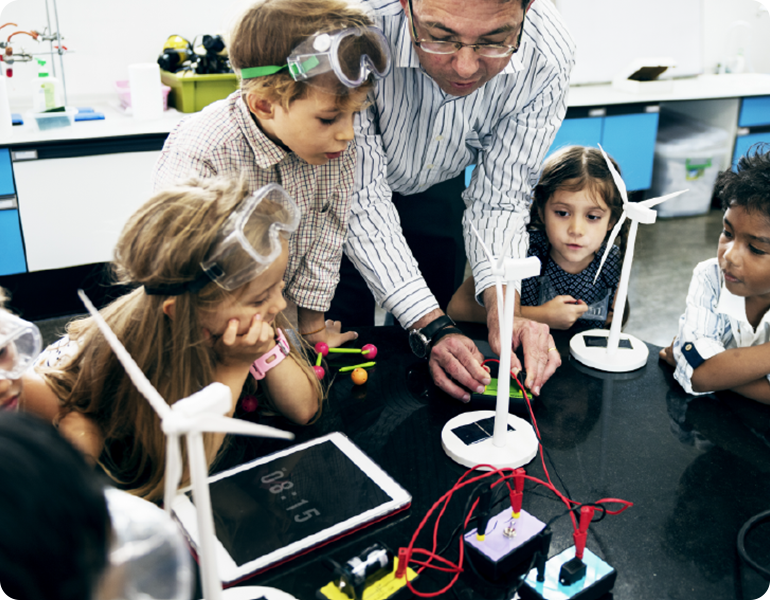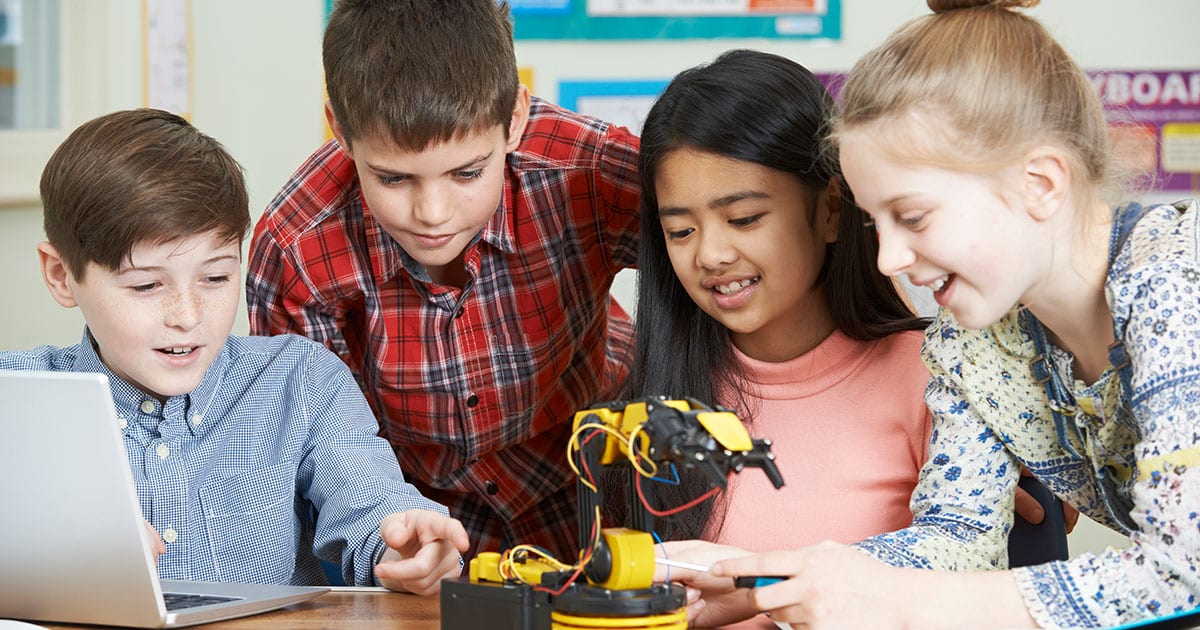STEM, which stands for Science, Technology, Engineering, and Mathematics, is an educational approach that is being increasingly emphasized in Malaysia. STEM education in Malaysia aims to provide students with a more comprehensive education that integrates science, technology, engineering, and mathematics in order to develop critical thinking, problem-solving, and creativity. The Malaysian government has recognized the importance of STEM education in preparing the next generation for the future economy and has integrated it into the National Education Policy. STEM education in Malaysia also emphasizes the use of technology and hands-on learning, collaboration and teamwork, and career preparation in fields such as engineering, technology, and science. In recent years, there has been a significant shift towards STEM education in Malaysia. Here are six ways in which STEM education is changing the education system in Malaysia.

(Photo by 3P Learning)
The Malaysian government has recognized the importance of STEM education and its potential to prepare students for the future economy. As a result, STEM education has been integrated into the National Education Policy, which outlines the government's vision for education in Malaysia.
The National Education Policy emphasizes the importance of integrating STEM education throughout the educational system in Malaysia. The policy aims to promote a holistic and integrated approach to education that develops critical thinking, problem-solving, and creativity among students.
The policy also encourages the development of maker spaces and innovation labs, which provide students with access to tools and technology to foster creativity and problem-solving skills. It also promotes the use of technology in education, such as online learning platforms, digital textbooks, and educational apps.

(Photo by Advancement Courses)
Fostering Innovation and Creativity
STEM education is indeed changing the education system in Malaysia by fostering innovation and creativity in students. STEM education recognizes that innovation and creativity are crucial skills for the modern workforce. It provides students with the necessary tools, resources, and knowledge to think creatively and develop innovative solutions to complex problems.
Through STEM education, students are encouraged to question, experiment, and think outside the box. This way, they can develop new ideas and solutions that can have a significant impact on society. STEM education helps students to understand that innovation and creativity are not just skills reserved for a select few but rather skills that can be developed and nurtured over time.

(Photo by Bellarmine University)
Promoting Hands-On Learning
STEM education is indeed changing the education system in Malaysia by promoting hands-on learning. STEM education recognizes the importance of providing students with practical, hands-on experience to supplement their theoretical knowledge. It helps students to gain a deeper understanding of concepts by providing them with the opportunity to engage in practical activities that relate to real-world scenarios.
STEM education encourages students to engage in experiments, design projects, and other activities that allow them to explore scientific, mathematical, and technological concepts. Students are given access to labs, maker spaces, and other resources that allow them to develop their own projects, solve problems, and experiment with different ideas.
STEM education provides students with the opportunity to engage in inquiry-based learning, where they are encouraged to ask questions, develop hypotheses, and carry out experiments to test their theories. This approach to learning is more engaging and effective than traditional rote learning because it allows students to discover knowledge for themselves and develop a deeper understanding of concepts.

(Photo by Aver)
Enhancing Technological Competence
STEM education recognizes that technology is an integral part of modern society and that it plays an essential role in nearly every industry. STEM education provides students with the necessary skills and knowledge to understand, use, and develop technology.
STEM education emphasizes the use of technology in the learning process, providing students with access to the latest software, tools, and resources. Students are encouraged to use technology to gather and analyze data, create simulations and models, and develop prototypes. This approach to learning helps students to develop a deeper understanding of technology and to become more proficient in its use.
STEM education also focuses on the development of programming and coding skills. Students are taught how to code and how to develop software applications. This skill is becoming increasingly important in nearly every industry, and STEM education is helping to prepare students for the workforce by providing them with the necessary skills.

(Photo by ESEP)
Encouraging Collaboration and Communication
STEM education emphasizes the importance of teamwork and collaboration. Students are encouraged to work in teams, to share ideas and resources, and to work together to develop innovative solutions to complex problems. This approach to learning helps students to develop the skills necessary to work effectively in teams, to manage conflicts, and to develop productive working relationships with others.
STEM education also focuses on the development of communication skills. Students are taught how to communicate their ideas clearly and persuasively, how to listen actively to others, and how to give and receive constructive feedback. These skills are essential for success in the modern workforce, where effective communication is critical for success in almost every role.
STEM education also encourages cross-disciplinary collaboration. Students are exposed to a variety of disciplines, including science, technology, engineering, and mathematics, and are taught how to integrate these disciplines to develop innovative solutions to complex problems. This approach to learning helps students to develop a deeper understanding of the relationships between different disciplines and to develop more effective solutions to complex problems.
 (Photo by Microsoft)
(Photo by Microsoft)
Addressing Skills Gaps and Preparing Students for the Future
Malaysia, like many countries, has identified skills gaps in the workforce, particularly in the areas of science, technology, engineering, and mathematics. By focusing on STEM education, Malaysia is working to close these gaps by producing a workforce with the skills necessary to succeed in the 21st century economy. This will not only benefit individual students but also help to drive economic growth and competitiveness.

(Photo by Eduporium)
Encouraging Diversity and Inclusivity
STEM education is also helping to encourage diversity and inclusivity in the education system. By providing opportunities for all students to engage with STEM subjects, regardless of their background or gender, STEM education is helping to break down barriers and promote equality. This is particularly important in Malaysia, where there has been a historically low participation of girls and women in STEM fields.

(Photo by FIRSTnspires.org)
In conclusion, STEM education is changing the education system in Malaysia by integration of STEM in the National Education Policy, fostering innovation, promoting hands-on learning, developing critical thinking and problem-solving skills, enhancing technological competence, encouraging collaboration and communication, addressing skills gaps, and encouraging diversity and inclusivity. These changes are essential to ensure that students are well-prepared for the future workforce and can succeed in a rapidly changing global economy.





